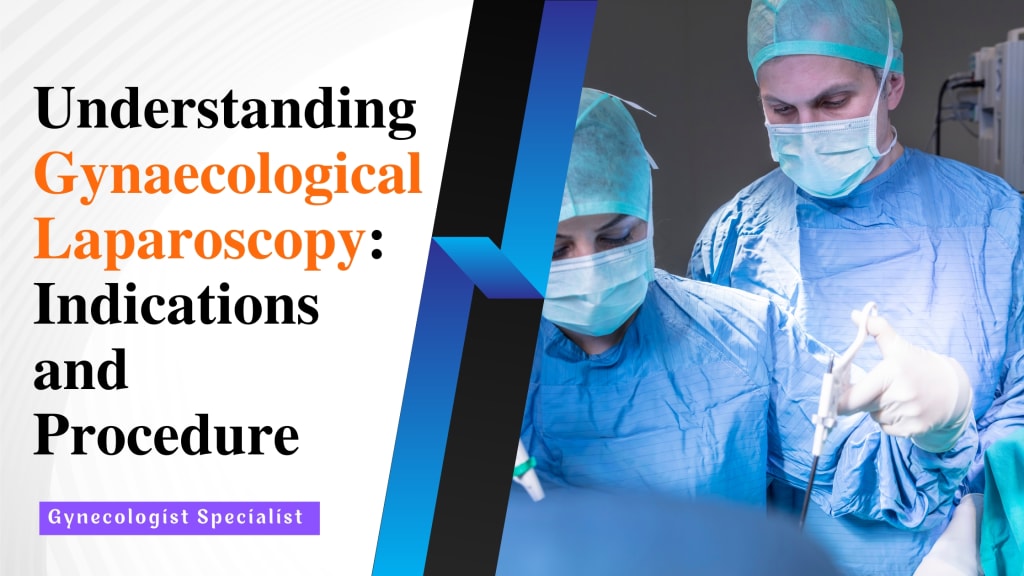Understanding Gynecological Laparoscopy: Indications and Procedure
Gynecological Laparoscopy

Introduction
Gynecological laparoscopy is a minimally invasive surgical procedure that is used to diagnose and treat a variety of conditions that affect the female reproductive system. The procedure is performed using a thin, lighted tube called a laparoscope, which is inserted through a small incision in the abdomen. The laparoscope is equipped with a camera, which allows the surgeon to view the inside of the pelvic area on a monitor.
Explanation of Gynecological Laparoscopy
Gynecological laparoscopy is a surgical procedure that uses a thin, lighted tube called a laparoscope to examine the internal organs of a woman's pelvic area. The laparoscope is inserted through a small incision in the abdomen, typically about the size of a buttonhole. The laparoscope is equipped with a camera that sends images of the inside of the pelvic area to a monitor, allowing the surgeon to see the organs in detail.
Benefits of Laparoscopy compared to traditional surgery
Reduced blood loss: Laparoscopy typically involves less blood loss than traditional surgery, which reduces the risk of complications such as infection and blood clots.
Shorter hospital stay: Patients who undergo laparoscopy typically have a shorter hospital stay than those who have traditional surgery.
Reduced risk of infection: The smaller incisions used in laparoscopy reduce the risk of infection compared to traditional surgery.
Early recovery: Laparoscopy allows the patient to return to normal activities faster than traditional surgery.
Better visualization: The laparoscope provides a clear view of the internal organs, which allows the surgeon to make a more accurate diagnosis and plan the treatment.
What is Laparoscopy?
Laparoscopy is a surgical procedure that uses a thin, lighted tube called a laparoscope to examine the internal organs of a woman's pelvic area. The laparoscope is inserted through a small incision in the abdomen, typically about the size of a buttonhole. The laparoscope is equipped with a camera that sends images of the inside of the pelvic area to a monitor, allowing the surgeon to see the organs in detail.
How the procedure is performed
Gynecological laparoscopy is performed under general anesthesia, the patient is placed in a lithotomy position (lying on their back with their legs in stirrups). The surgeon makes one or more small incisions in the lower abdomen, then inserts the laparoscope through one of the incisions.
Carbon dioxide gas is then infused into the abdomen to create space for the surgeon to see the organs more clearly. The laparoscope is equipped with a light and a camera that sends images of the inside of the pelvic area to a monitor, allowing the surgeon to see the organs in detail.
The surgeon may also use small instruments, such as scissors, forceps, or lasers, through additional small incisions to diagnose or treat a specific condition.
Equipment used in Laparoscopy
Laparoscope: A thin, lighted tube with a camera at the end that is inserted through a small incision in the abdomen. It allows the surgeon to see the inside of the pelvic area on a monitor.
Carbon dioxide gas: This is used to inflate the abdomen, which creates space inside the abdomen and allows the surgeon to see the organs more clearly.
Instruments: Small instruments such as scissors, forceps, or lasers are used through additional small incisions to diagnose or treat a specific condition.
Light source: A light source is used to illuminate the inside of the abdomen, which helps the surgeon to see the organs more clearly.
Video camera and monitor: The images captured by the laparoscope are transmitted to a monitor, which allows the surgeon to see the inside of the pelvic area in detail.
Risks and complications associated with Laparoscopy
Laparoscopy is generally considered a safe procedure, but like any surgery, it does come with some risks and potential complications. Some of the risks and complications associated with gynecological laparoscopy include:
Infection: Any surgical procedure carries a risk of infection.
Bleeding: There is a risk of bleeding during or after the procedure.
Injury to surrounding organs: There is a risk that the laparoscope or other instruments may cause injury to surrounding organs during the procedure.
Adhesions: Scar tissue can form in the abdomen and may cause pain or bowel obstruction.
Reaction to anesthesia: Some patients may have an adverse reaction to the anesthesia used during the procedure.
Conversion to open surgery: In some cases, the surgeon may need to convert the laparoscopy to open surgery to complete the procedure safely.
Indications for Laparoscopy
Diagnostic indications include:
Endometriosis: Laparoscopy is used to diagnose and stage endometriosis, which is a condition in which the tissue that lines the uterus grows outside of it.
Fibroids: Laparoscopy can be used to diagnose and remove fibroids, which are non-cancerous growths that develop in the uterus.
Adhesions: Laparoscopy can be used to diagnose and treat adhesions, which are abnormal bands of scar tissue that can form inside the pelvic cavity.
Pelvic Inflammatory Disease: Laparoscopy can be used to diagnose and treat pelvic inflammatory disease (PID), an infection of the female reproductive organs.
Therapeutic indications include:
Ovarian cyst removal: Laparoscopy can be used to remove benign ovarian cysts.
Tubal ligation: Laparoscopy can be used to perform tubal ligation, which is a form of permanent birth control.
Infertility: Laparoscopy can be used to diagnose and treat certain types of infertility, such as blocked fallopian tubes or endometriosis.
Preparation for Laparoscopy
Pre-operative instructions: Patients will be given specific instructions by their surgeon regarding preparation for the procedure, such as fasting for a certain period before the surgery and discontinuing certain medications.
Anesthesia: Laparoscopy is performed under general anesthesia. Patients will be given instructions on how to prepare for the anesthesia by the anesthesiologist.
Physical examination: Patients will undergo a physical examination before the procedure to ensure that they are in good health and to identify any potential risks or complications.
Conclusion
Gynecological laparoscopy is a minimally invasive surgical procedure that is used to diagnose and treat a variety of conditions that affect the female reproductive system. The procedure is performed using a thin, lighted tube called a laparoscope, which is inserted through a small incision in the abdomen. The laparoscope is equipped with a camera, which allows the surgeon to view the inside of the pelvic area on a monitor.
Laparoscopy offers many benefits over traditional surgery, including less pain, scarring, and blood loss, and a shorter recovery time.
It is important for patients to discuss the risks and potential complications with their surgeon before undergoing the procedure and also to follow the pre-operative instructions provided by the surgeon and the post-operative care to ensure a smooth recovery.
About the Creator
Enjoyed the story? Support the Creator.
Subscribe for free to receive all their stories in your feed. You could also pledge your support or give them a one-off tip, letting them know you appreciate their work.





Comments
There are no comments for this story
Be the first to respond and start the conversation.